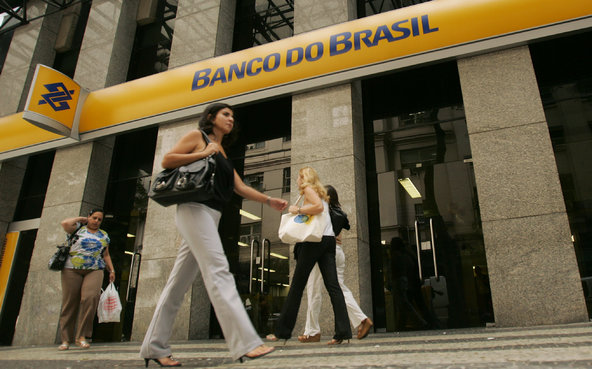The gross domestic product of the 17-nation euro zone grew at an annualized rate of about 1.2 percent in the second quarter. It is certainly not clear, based on only three months of data, that Europe’s recession has ended. But it is further evidence that the older engines of growth are revving into gear as the most recent sources of growth have been slowing down.
“The general proposition for much of the last generation has been that emerging markets grow faster. That’s what’s changed,” said Neal Soss, the chief economist at Credit Suisse.
“The acceleration such as it is happening is in the first-world economy rather than the emerging markets.”
The growth of the BRIC countries — Brazil, Russia, India and China — has raised living standards in those nations and in others in Southeast Asia, Latin America and Eastern Europe. Those four nations had an even broader global impact by also providing new markets for American products while its citizens made the electronics and other products wanted by consumers in the United States and other developed economies.
So a decline in their growth rate should be worrisome to the United States. But Jim O’Neill, the Goldman Sachs economist who coined the term BRIC more than a decade ago, thinks one of the new beneficiaries of the shift in the global economy is most likely to be the United States. “I find myself thinking the U.S. is going to be one of the biggest winners,” said Mr. O’Neill.
It could gain from the Chinese government’s stated intention to shift from big government investment projects to a more consumer-driven economy. That could create demand for American products, while making commodities cheaper for American companies. Rising wages in China could also encourage manufacturing in the United States.
There were signs in recent trade statistics that this shift may already be under way. Exports from the United States to China grew in June while imports from China declined. The overall United States trade deficit dropped to its lowest level since 2009. China’s newfound restraint is at the fulcrum of the shift. Its government is trying to temper the economy, the largest among the developing nations. In doing so, it shoulders much of the blame for the slowdown elsewhere in Asia and in Latin America. The price of commodities like iron and copper, which previously buoyed the developing countries producing them, are now sinking as Chinese leaders are reining in the grand developments that needed metals.
Brazil was growing largely because of commodities like iron ore and soybeans, which it was exporting to China. Two years ago, the Brazilian economy grew 7.6 percent. This year, however, economists predict the number will be around 2.3 percent.
“After years of strong growth, many Brazilians grew optimistic, but for many people who improved their lot, there is now a sense that their potential to rise further is limited,” said Samuel Pessoa, a researcher with the Brazilian Institute of Economics at the Fundação Getúlio Vargas, an elite university in Rio de Janeiro. “People are worried.”
There is little prospect that the BRIC economies will ever return to the roaring growth that had come to seem normal.
“Many superficial observers just assumed that the BRIC countries would keep growing at the rate they did in the first decade, which was very unlikely,” said Mr. O’Neill, who recently retired from Goldman.
Mr. O’Neill said that as China moved to a more consumer-based economy, “the winners and losers of the new China are probably going to be quite different than the winners and losers of the old China.”

Dan Horch contributed reporting.
Article source: http://www.nytimes.com/2013/08/15/business/global/old-economies-rise-as-emerging-markets-growth-falters.html?partner=rss&emc=rss


